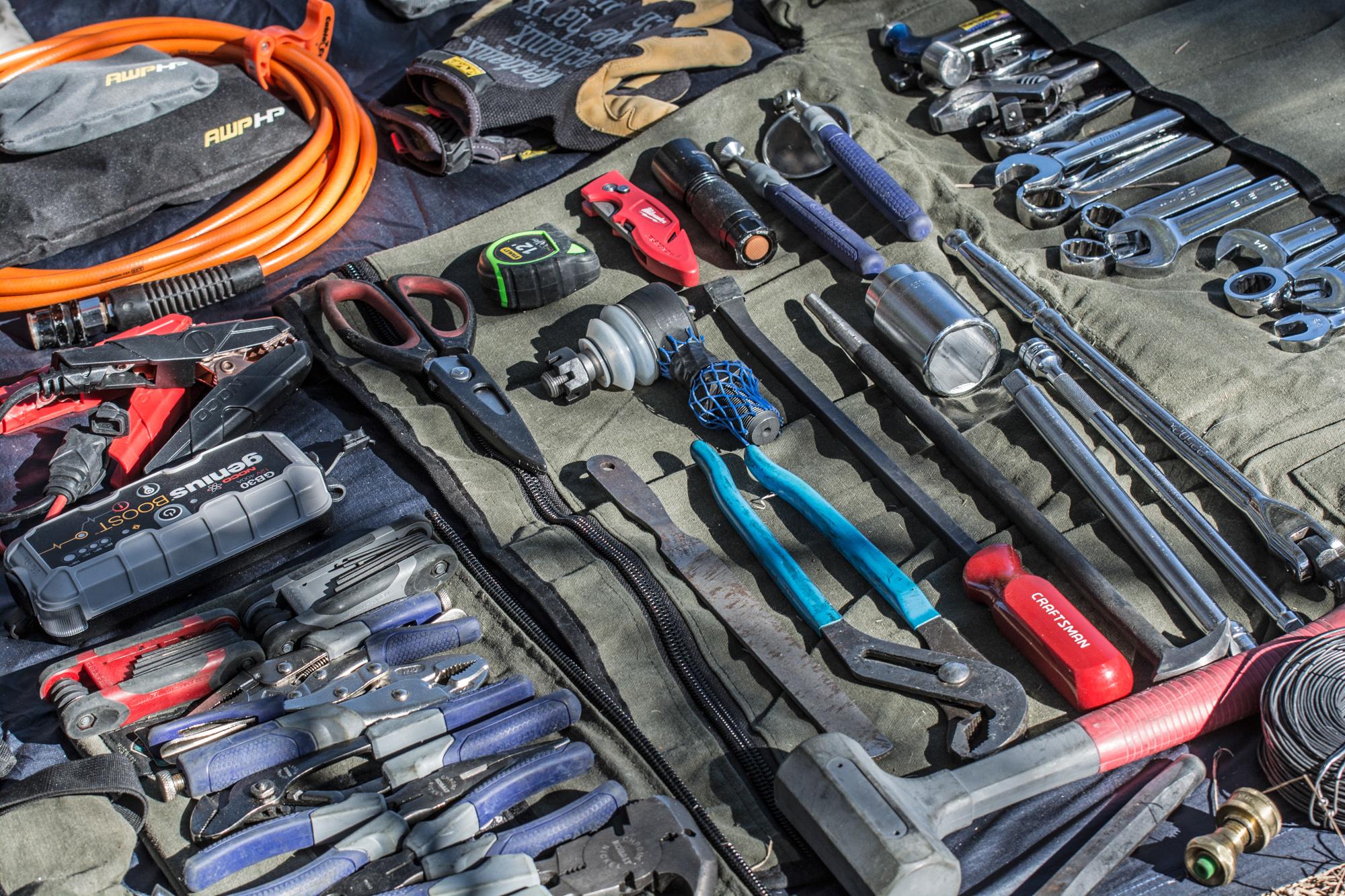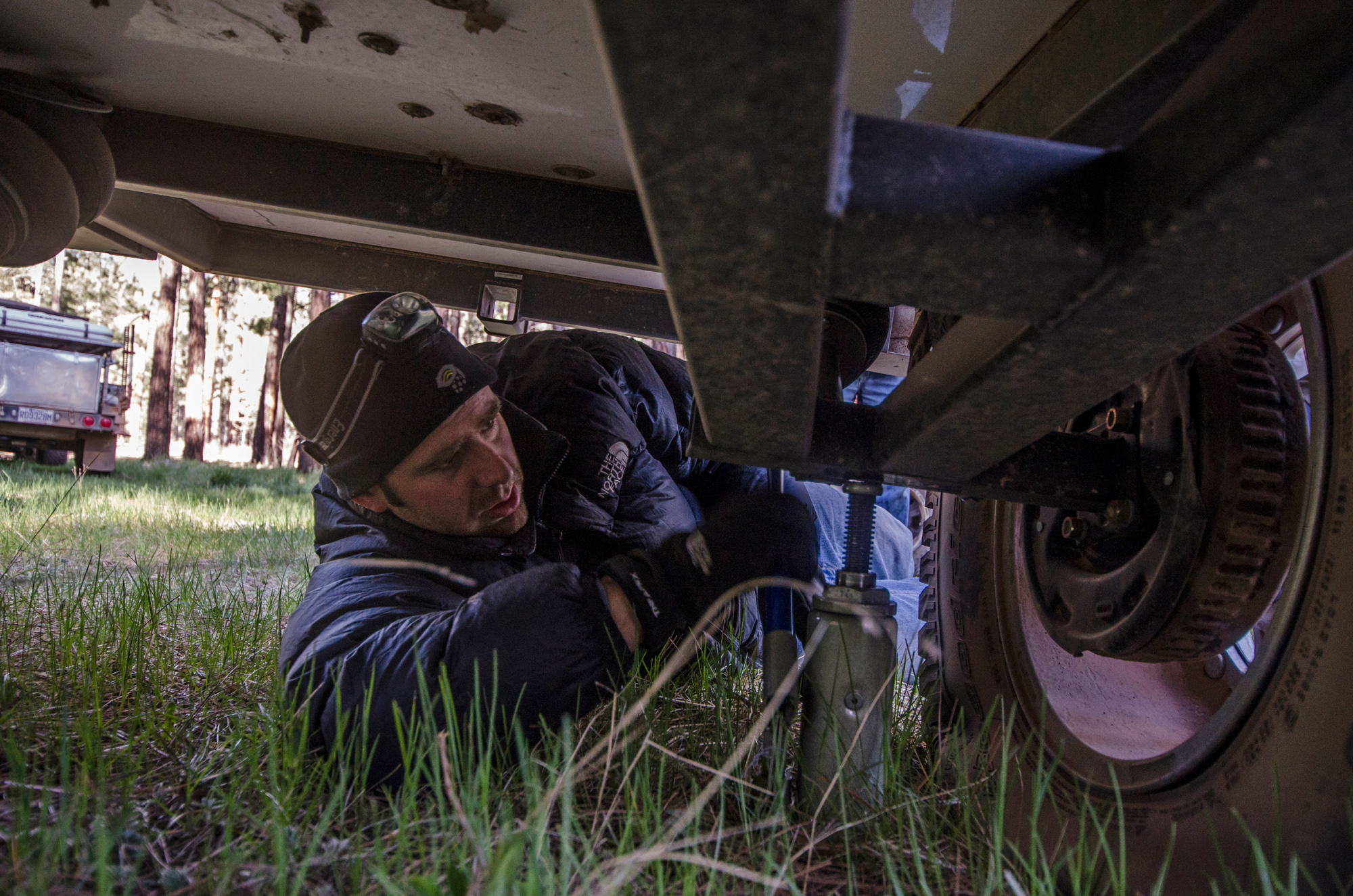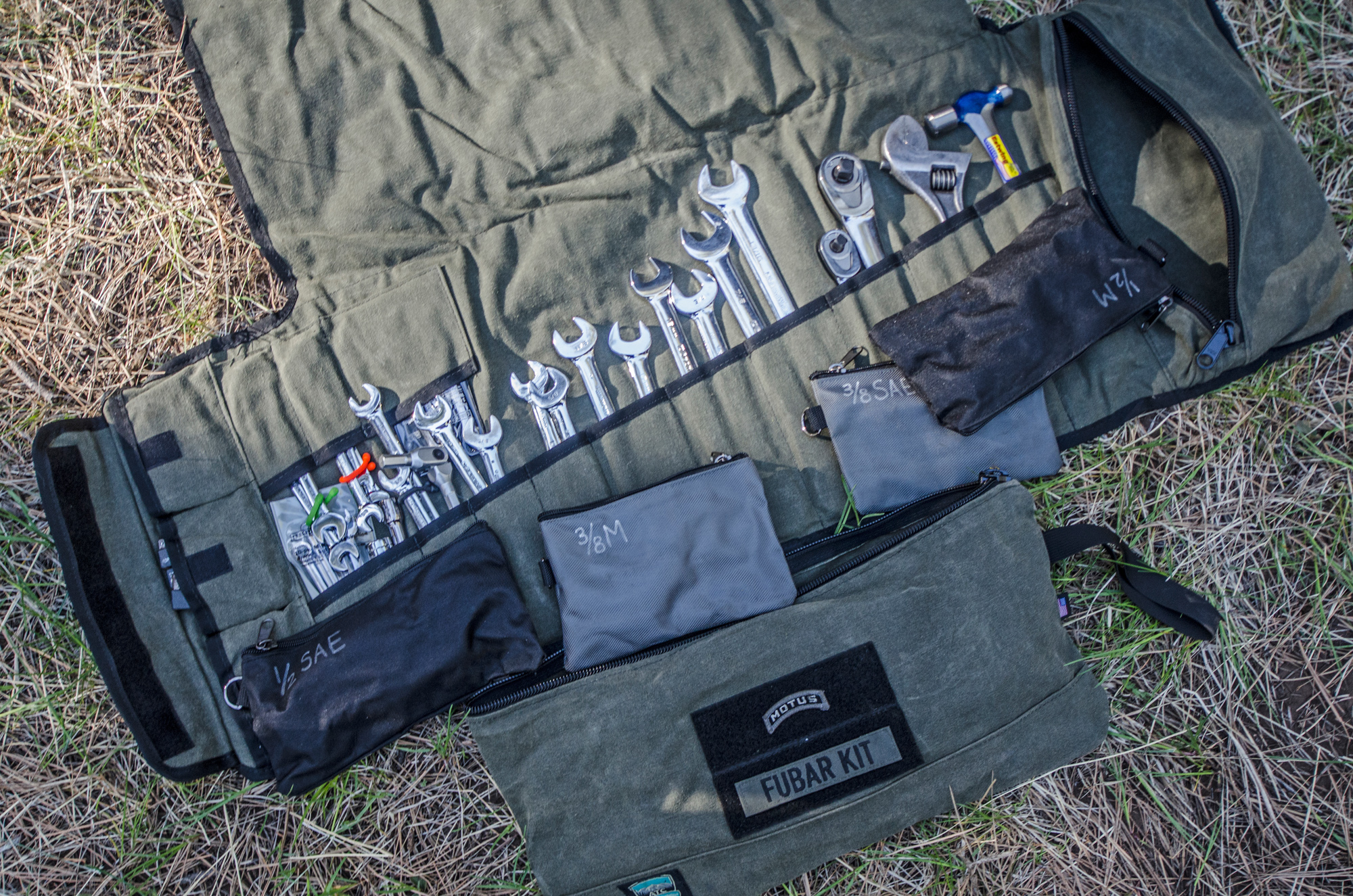A field tool kit refers to the tools you keep in your vehicle for roadside and trailside repairs and handiwork; the key is to assemble one that fits your vehicle. Use it at home when wrenching on your truck to get acquainted with what works and what is lacking. It is better to find out that you’re missing a critical item before you set out on that remote shelf road. If you keep a quality set of sockets, ratchets, and wrenches in your garage toolbox but have an inferior set in your field kit, reverse those roles. You don’t want a tool failing when it matters the most (on that remote shelf road).
THE HARDWARE EXERCISE
Take the time to find and touch every nut, bolt, and fastener on your vehicle (inside and out) and check that you have the matching tools for each: sockets, wrenches, bits, etcetera—this means you will need to survey and match each one to a considerable amount of hardware. It’s a great exercise for an otherwise lazy Saturday afternoon. You will most likely find that you need to add pieces to your field kit—particularly larger sockets and wrenches. If you have a 22mm socket for your lower control arm bolts, make certain you have a 22mm wrench or additional 22mm socket for the nut side, although in many cases, the nut side is not the same size as the bolt head. Only use adjustable Crescent-type wrenches in a pinch as they tend to round hex heads and can open under pressure, slip, and cause injury or damage.
WRENCH SMART
Make sure to wear safety glasses when working under your rig to protect your eyes from dirt and debris that may become dislodged with wrenching tasks. Be careful when using tools in close proximity to your face or when working in awkward (but necessary) hand/arm positions; slipping with a tool under substantial force could cause a serious injury. Take the time to think about the repair thoroughly and confirm you are using the right tools for the job; even if it takes a few more minutes digging through your field kit to find that 4-inch extension and swivel (universal joint) adaptor for that hard to reach upper control arm bolt. And don’t forget to double-check your work.
TORQUE WRENCH
The hardware exercise serves a double purpose since it’s also an excellent opportunity to verify that everything is tight and under proper torque. A click or beam-type torque wrench will do; electronic versions are not justifiable for most weekend wrench enthusiasts. An under tightened bolt allows for play between the hardware and component-mating surface, causing accelerated wear and damage—or worse, loosening hardware. Conversely, an overtightened bolt will bind the hardware and component mating surface. This can cause abnormal handling characteristics when bushings, steering, or suspension are involved. Overtightening may also result in stripped threads, sheared-off bolt heads, and damaged componentry. Print the torque specs for your vehicle (if they are not in the owner’s manual) and get busy. When done, use a paint pen to mark bolt heads and the fixed contact point with a single swipe line—the mark will allow you to do a quick survey under your vehicle and check for a bolt that has rotated from its proper position. The torque for major steering and suspension components should be monitored every few thousand miles of off-pavement vehicle use as vibrations and frequent suspension/steering cycles tend to spin nuts. If space is limited, don’t worry about carrying a torque wrench in your vehicle. For roadside and trailside repairs, it’s better to overtighten (for the short haul) than to under tighten—re-torque when you get home.
PARING DOWN
Overloading your overland rig is detrimental to its performance and causes accelerated wear and tear on a vehicle. Just because you have the storage space to carry 200 pounds of tools does not mean you should. Once you feel that your field kit is comprehensive, the next step is to pare down. Carefully evaluate each tool that you suspect may not have a strong purpose. Those that are seldom used, don’t fit your vehicle, or that you are not sure about carrying should be placed in purgatory on your workbench. Do you really need three different-sized pry bars? In the weeks leading up to your next trip, as you survey these items daily, contemplate and decide their importance and fate—the garage or the field kit? The above advice should be applied to each category of your entire overlanding kit: clothing, cooking, electronics, recovery, and so forth. The most important provisions should have duplicates and triplicates. Example: Your normal water supply should be backed up with the means to filter and store water should your primary supply dwindle. The less important provisions should have dual uses. Example: Can your Hi-Lift handle be substituted for a 30-inch breaker bar?
Once your field kit is streamlined, choose an easy-access storage system that takes up the least amount of space possible. Soft-sided storage bags and rolls keep things quiet and tightly organized—I’m partial to heavy waxed canvas bags and tool rolls.
Vehicles both old and new, stock and fully built, are all subject to mechanical failure. Investing time in vehicle preparations and your field tool kit assembly will minimize the impact of mishaps encountered when away from your home turf.





